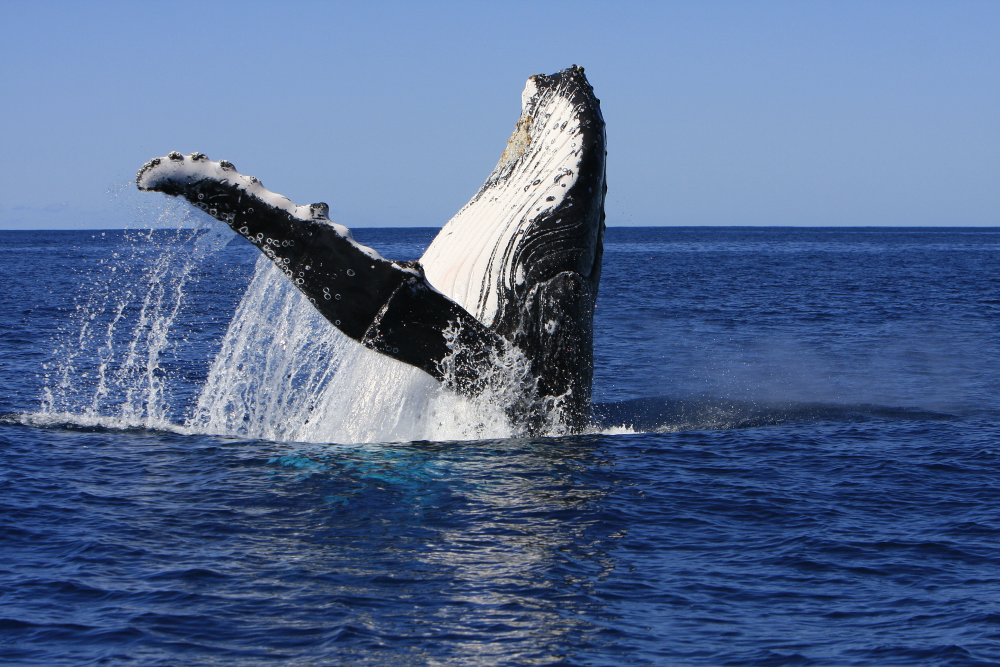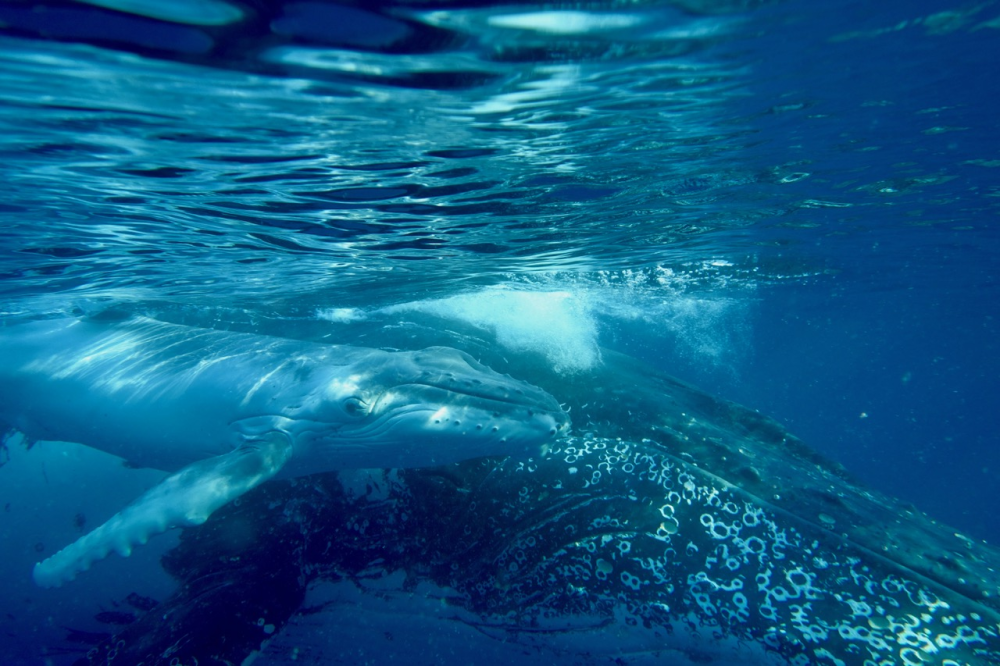Whale song is something we humans listen to when relaxing – but new research has shown that, as a form of communication, it ain’t messing around. A new study has found that certain whale species’ vocalizations adhere to two linguistic laws of efficiency seen in human language: Menzerath’s law and Zipf’s law (with Zipf’s law being something almost all human languages seem to follow).
ADVERTISEMENT GO AD FREE
Big news for anyone hoping to one day talk to a whale, and it arrives at the same as another groundbreaking study into whale song that used methods normally used to study human infants. It too found that whale vocalizations follow Zipf’s law of brevity in the case of those song-swapping humpbacks, suggesting that, like humans, they’ve evolved to make their vocal communications more efficient.
Talk smarter, not faster
Efficiency is key if you’re going to talk out loud. Firstly for the fact that you may be trying to communicate something urgent, like “watch out for that ship”, but also because if you’re going to make a lot of noise for a long time, you’re going to attract unwanted attention. It’s as important for predators as it is for prey – just check out the incredible efficiency of whistling dholes.
Menzerath’s law and Zipf’s law both focus on this kind of streamlining. Menzerath’s is all about how longer words or vocalizations are more efficient if made up of shorter elements (like syllables or notes), while Zipf’s law states that common and shorter elements will be used more often in efficient language than longer, rarer ones.

Breaching humpback whale in New Caledonia.
Image credit: Operation Cetaces
One investigation headed up by Mason Youngblood at the Institute for Advanced Computational Science, Stony Brook University, became the first large-scale meta-analysis of linguistic efficiency in whale communication, covering 16 species and over 610,000 vocal elements from 24 studies. This marked an unprecedented range of cetacean species, and the data was then directly compared to human languages.
It found that 11 of the 16 whale species adhered to Menzerath’s law, with longer elements in their vocalizations being more likely to be made up of shorter elements. Curiously, in some species this was found to be even stronger than in human language, potentially indicating they’ve evolved a more efficient means of communicating (though we can’t assume meaning from the vocal structures of another species).
Zipf’s law of abbreviation was only found to apply to blue whales and humpback whales, though only five species could be investigated for this law due to data constraints. Humpbacks, famous for their song, came out on top as the species with the most language-like vocal efficiency, exhibiting both laws in their remarkable music.
ADVERTISEMENT GO AD FREE
In the case of humpbacks, it could be that their unique cultural evolution contributes to the complexity and efficiency of their song. These whales go through song “revolutions” with new songs being invented and then spread among whales across the Pacific Ocean. The tunes tend to start out simpler and get more detailed as they spread.
Despite these differences in function, the communication sequences of these animals appear to have evolved for increased efficiency in time, just like in human language
Mason Youngblood
“This process may play a big role in the strength of linguistic laws in humpback songs, because complexity gains are often paired with efficiency gains – if you make something harder to sing and learn, then you need to cut costs in other areas, like overall vocalization time,” Youngblood told IFLScience. “Menzerath’s law and Zipf’s law of abbreviation essentially measure the extent to which vocalizations are compressed in time.”
ADVERTISEMENT GO AD FREE
“I think the most fascinating takeaway from my study is that communication evolves in similar ways across a wide range of species, many of whom vocalize for very different reasons. Humpback and bowhead whales are thought to sing to attract mates, killer whales and dolphins vocalize to coordinate behavior during hunting and other activities, and sperm whales convey information about clan affiliations. Despite these differences in function, the communication sequences of these animals appear to have evolved for increased efficiency in time, just like in human languages.”
From the methodology of babes
A second study looked at recordings of New Caledonian humpback whales across a seven-year period to determine if they contained patterns that followed Zipfian frequency distribution. It too was among the first to apply linguistic segmentation methods to whale song structure, a method that’s typically used to study human infants.
These findings raise the intriguing possibility that similar statistical structure will be found wherever complex sequential behaviour is transmitted culturally
Dr Ellen Garland
They found that the song sequences did follow a Zipfian frequency distribution, as a handful of sequences were cropping up frequently, while most were rare. This pattern mirrors the word frequency distribution we see in human languages.
ADVERTISEMENT GO AD FREE
Together, the findings reinforce the idea that communication efficiency is a widespread evolutionary adaptation, and could be a kind of convergent evolution, suggesting that we can look to species far beyond primates for insights on how our own language evolved.

Humpback whale mother and calf on the New Caledonian breeding grounds.
Image credit: Marc Quintin
“Revealing this hidden language-like structure in whale song was unexpected, but it strongly suggests this cultural behavior holds crucial insight into the evolution of complex communication across the animal kingdom,” study co-author Dr Ellen Garland of the University of St Andrews School Of Biology told IFLScience. “These findings raise the intriguing possibility that similar statistical structure will be found wherever complex sequential behavior is transmitted culturally.”
The discovery can also aid conservation projects monitoring whale groups, as fine-scale song differences between populations can allow a rapid, broadscale assessment of population structure and connectivity.
Furthermore, highlighting how important these cultural behaviors are to whales demonstrates why increasing noise pollution in our oceans can be catastrophic for these animals – something the humpback whales’ smash-hit record drove home when it became the bestselling nature album of all time.
ADVERTISEMENT GO AD FREE
The studies are published in the journals Science Advances and Science respectively.
Source Link: Humpback Whale Song Follows Zipf’s Law, A Fundamental Law Of Human Language